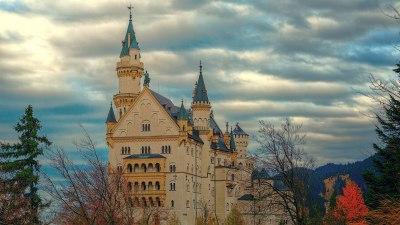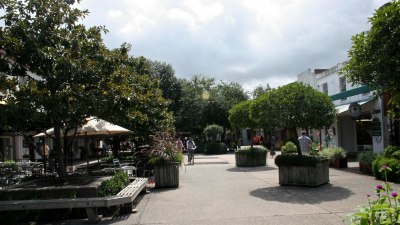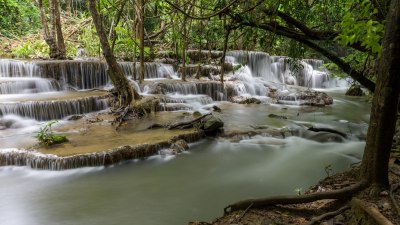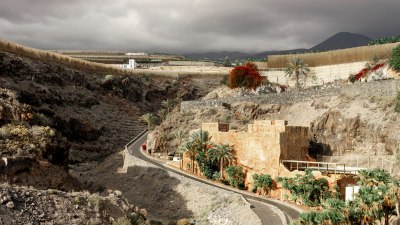Where the Jungle Sings in Costa Rica
Discover the enchanting sounds of nature in Costa Rica's lush jungles, where wildlife thrives and adventure awaits.
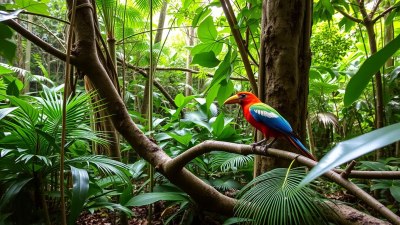
Image created with Flux Schnell
When you think of Costa Rica, envision vibrant jungles alive with the sounds of nature. The jungles of Costa Rica are not just a sanctuary for wildlife but a symphony of natural melodies that echo through the dense foliage. In this article, we will explore various jungle regions in Costa Rica, their unique ecosystems, and how you can experience the majestic sounds of the jungle firsthand.
The Lush Biodiversity of Costa Rica
Costa Rica is renowned for its astonishing biodiversity. Covering approximately 25% of the country's land area, national parks and reserves protect numerous ecosystems, making it one of the most biodiverse places on Earth. Among these ecosystems, jungles represent a critical habitat for both flora and fauna. From the towering trees reaching for the sky to the rich undergrowth teeming with life, the jungles are a breathtaking sight.
Soundscapes of the Jungle
The auditory experience in the jungles of Costa Rica is unlike any other. As you walk through the dense underbrush, the rustle of leaves and the calls of wildlife are ever-present. The chorus that fills the air ranges from the distant howls of monkeys to the melodic songs of birds. This rich soundscape creates a unique environment, inviting visitors to connect more deeply with nature.
Exploring Tortuguero National Park
One of the most significant areas to experience the sounds of the jungle is Tortuguero National Park. Located on the Caribbean coast, Tortuguero is famous for its canal systems, which provide a habitat for numerous species, including manatees, caimans, and a variety of birds. As you navigate through the canals, keep your ears open for the calls of toucans and the low roars of howler monkeys. The park is also an essential nesting site for sea turtles, adding another layer to the jungle’s soundscape.
Corcovado National Park: Nature's Orchestra
Corcovado National Park on the Osa Peninsula is often described as a jewel of Costa Rica. Recognized for its incredible biodiversity, Corcovado is home to over 400 species of birds and numerous mammals, including tapirs and jaguars. The park's uninterrupted wilderness means that visitors can experience the sounds of nature at their fullest. The calls of scarlet macaws fill the air, while the rustling of the underbrush may reveal the movement of a troop of squirrel monkeys. Guided tours through the park enhance this experience, as local guides share their knowledge of the rainforest's symphony.
Manuel Antonio National Park: A Concert of Life
Although known for its beautiful beaches, Manuel Antonio National Park also houses lush jungles teeming with wildlife. The juxtaposition of the beach and jungle provides a unique backdrop where visitors can listen to the myriad of sounds created by nature. The park features several hiking trails that lead deep into the forest, where the sounds of howler monkeys and the chirping of insects dominate the landscape. The trails are not only auditory delights but also offer opportunities to spot sloths, iguanas, and capuchin monkeys.
Engaging with Locals: The Cultural Soundscapes
In addition to the natural symphonies, the jungles of Costa Rica are home to indigenous communities that bring their unique sounds into the environment. Engaging with local cultures provides insight into how these communities have coexisted with nature. Traditional music, often inspired by the sounds surrounding them, highlights the deep connection to the land. Visitors can enjoy performances featuring traditional instruments, such as marimbas, that play melodies reflective of jungle life.
Experiencing the Jungle in the Morning
The early morning hours are perhaps the most magical time to experience the jungle. As the sun rises, the jungle comes alive with song. Many species are more vocal during this time, creating a natural alarm clock that beckons adventurers out of their tents and into the wild. Early risers may be rewarded with sightings of elusive creatures like the resplendent quetzal, whose call can be heard echoing through the valleys. A morning trek can unveil the jungle's hidden treasures, including vibrant orchids and cascading waterfalls, all while serenaded by nature's lullaby.
Nighttime in the Jungle: A Different Melody
As darkness falls, the jungle transforms into a symphony of nocturnal sounds. The chirping of crickets, the call of night owls, and the croaking of frogs create an entirely different atmosphere. Some guided night walks allow visitors to experience this otherworldly jungle ambiance, offering glimpses of creatures rarely seen during the day. The fascinating behavior of nocturnal animals adds depth to the understanding of the jungle ecosystem.
Eco-Tourism and Conservation Efforts
Participating in eco-tourism ventures allows visitors to appreciate the sounds of the jungle while supporting conservation efforts. Many eco-lodges and tours in Costa Rica prioritize sustainability, ensuring that the jungle ecosystem is protected while providing unique experiences. By engaging with responsible tourism, visitors can help preserve the environment and contribute to local communities. This creates a harmonious balance wherein travelers can enjoy the sounds of the jungle while making a positive impact.
Preserving the Sounds of the Jungle
With the increasing threat of deforestation and climate change, it is more important than ever to preserve the jungles of Costa Rica. The sounds that define the jungle are diminishing, and the rich melange of wildlife is at risk. Efforts to protect these areas involve not just reforestation but also awareness and education about the importance of biodiversity. Tourists can play a crucial role by supporting sustainable businesses and advocating for conservation practices.
A Symphony to Remember
In conclusion, the jungles of Costa Rica offer a unique auditory experience that enchants visitors. The combination of diverse ecosystems, rich wildlife, and cultural interactions creates an environment that resonates with life. As one travels through these lush landscapes, it becomes evident that the songs of the jungle are not merely sounds; they are a reminder of the interconnectedness of all living things. By valuing and preserving these environments, we can ensure that future generations will continue to enjoy the beauty of where the jungle sings.

